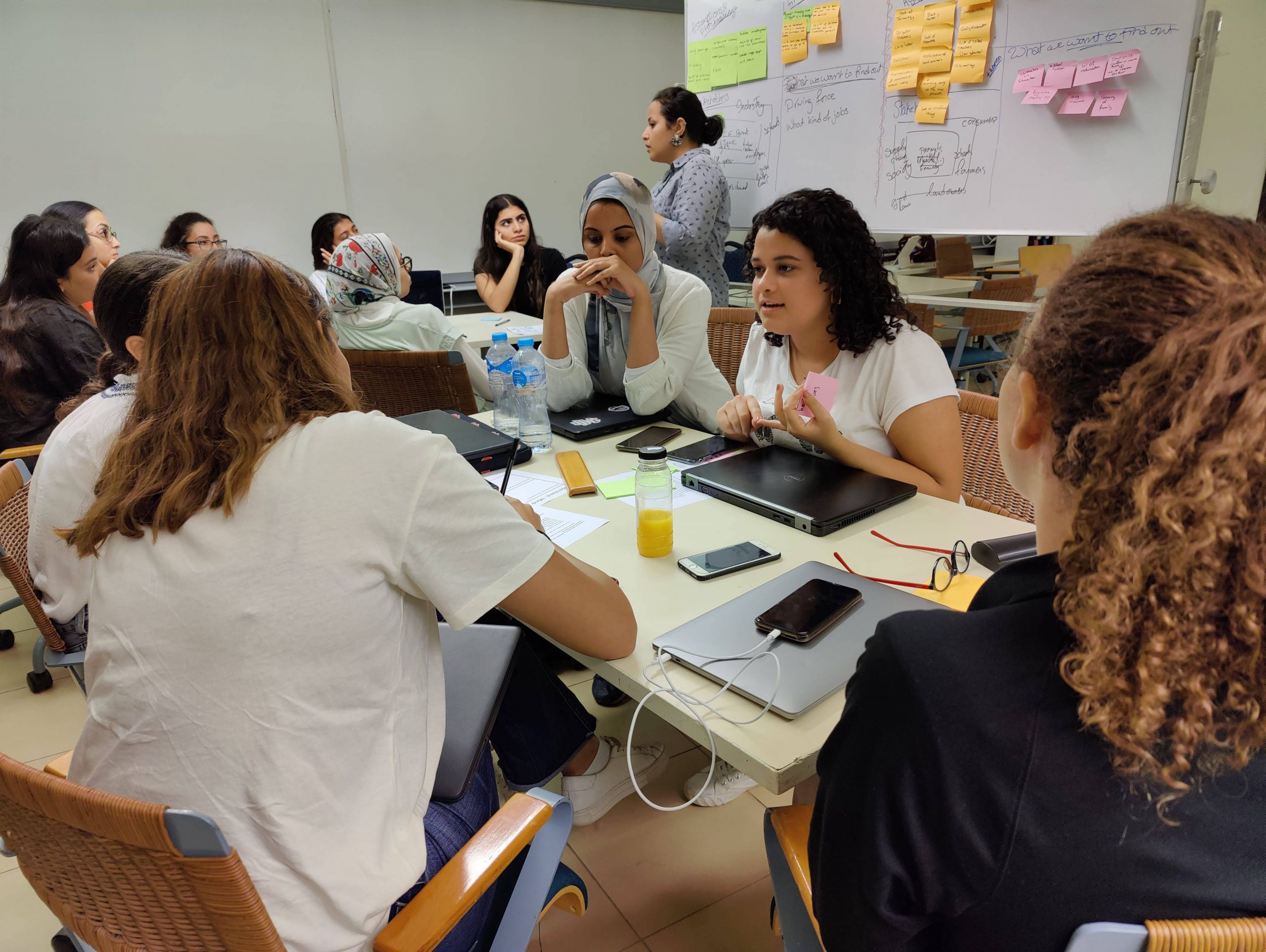The American education system offers many benefits, such as the emphasis on critical thinking, interdisciplinary thinking, and experiential learning. However, as a psychology professor at an American university, I’ve learned that there is a unique challenge to teaching in an American university abroad: recognizing that I am not in America.
I am an Arab-American who was born and raised in the U.S. by Egyptian parents. I also look Middle Eastern and wear a headscarf. I spent my whole life in the U.S. up until I became a professor at AUC. I did not fully realize that I was no longer in America until I became a newly minted professor who was developing her courses. As any professor knows, developing courses takes a lot of work. For example, what content do you teach? What order to do you teach it in? And how do you teach it so that students can actually understand it? I turned to existing resources to help me out, such as instructor manuals and recommended activities that came with textbooks or were online. But as I skimmed through these resources, I quickly learned that I would have to re-invent the wheel. Most examples, film clips, group activities, and writing assignments relied too heavily on American history and pop culture. Sure, many of my students listened to the songs of American celebrities such as Kayne West and Ariana Grande, or repeatedly watched episodes of Friends. But as an American, I knew that quite frankly, this was not enough. Despite textbooks’ recommendations, I doubted that most students would be able to compare the values of the deep South and the rest of the U.S.. What South? Do we mean Upper Egypt? Or how about the reference to Dorothy not being in Kansas anymore? Who is Dorothy and where is Kansas? I felt conflicted because the premier textbooks in psychology were American. But I knew that I could not solely rely on American examples and activities. My goal had never been to erase American culture, but to also supplement it with Egyptian culture if I hoped my students would learn anything.
I decided to put myself in the shoes of my average student: young, Egyptian, family-oriented, not as secular as the West, enjoys both American and Arabic music and movies, has not been to America at all or has only been to one state if they have been (which was mostly likely New York). Next, I would go through each textbook example and instructor resource to determine whether or not my students would probably be able to understand them. In taking the lens of my average student, I could cut out what did not work, which admittedly, was most things… Next, I would use the general purpose of the example or idea behind the activity to tweak it so it would be culturally relevant. For instance, rather than compare the values of different parts of the U.S., why not highlight values in the Middle East to illustrate the concept of honor? How about instead of showing effects of persuasion by using a random American commercial, I use an Egyptian one instead? And how about showing a video of fashion trends within Egypt to illustrate implicit conformity, rather than vaguely discussing fashion. Sometimes I came up with examples and activities on my own based on my exposure to Egyptian culture; granted, I had a bit of an advantage given my Arab ethnicity and ability to speak Arabic. But there were also other times, where I let my students teach me. For example, I would have them share stereotypes that they have experienced as Egyptians and talk about Egypt’s cultural attitudes towards sex and sexual harassment.
As semesters went on and I refined my courses, I found my students to be generally receptive to most examples and activities. They found them enjoyable, informative, and relatable. But along the way, I learned that I had also been teaching more than just content. Without even realizing it, I was allowing my students to accept and even be proud of their Egyptian (or Arab) identity. As a professor, I saw many of my students constantly face an identity struggle, even if they were unaware of it. The world was constantly telling them that anything Western – American or European – was better than anything Middle Eastern. I could sense the occasional self-hatred and it was heartbreaking. But at the same time, students would sometimes get protective of their Arab identity.
Unfortunately, most of the psychology studies I presented in my classes were based on Western samples. As a result, students sometimes felt angry for being excluded from the narrative of psychology. Were they not worth studying? Should the findings even apply to them? But there was not much that I could do. Because while I could alter examples and activities, I could not change the samples of past psychological studies. Most psychology research was simply based on American or European samples. However, I tried to alleviate these concerns in various ways. First, I would have explicit conversations with students about whether they think the findings are replicable, and why. These conversations were especially fruitful when doing an experiment with the students that would fail to replicate. Second, I would highlight ancient psychological theories from the Middle East that even pre-dated the West’s formal academic pursuit of psychology. Third, I began presenting on research in the Middle East that was relevant to the course. In particular, I would discuss the types of research questions being investigated in the region and some of the unique challenges that researchers were facing. I would also discuss some of the researchers doing that work in order for students to know that there is someone out there studying them and that they matter.
Through these experiences, my ultimate hope is that no matter what institution we are at, we can be better attuned to where we are. Even with the great values of the American education system and valuable educational resources, it is important to remember that we are not always in America.
Editor’s note*
Lameese’s article sharing her experience reminded me of Culturally Relevant/Responsive Pedagogy, which encourages teachers to incorporate students’ cultures into their teaching. Here are some articles with more information on this approach:
Gay, G. (2002). Preparing for culturally responsive teaching. Journal of Teacher Education. 53(2), 106-116. Retrieved from: http://jte.sagepub.com
Howard, T. C. (2003). Culturally relevant pedagogy: Ingredients for critical teacher reflection. Theory into Practice. 42(3), 195-202.
Ladson-Billings, G. (1995). Towards a theory of culturally relevant pedagogy. American Educational Research Journal, 32(3), 465-491
I also recently came across this IDEA framework which gives practical tips on how to look at your courses and improve Inclusion, Equity and Anti-Racism in them.
If you’re interested in trying Culturally Relevant Pedagogy in your teaching and would like to request a CLT consultation, please fill this form.
If you have already been incorporating students’ own culture into your teaching, let us know more about that in the comments!
* This article was edited by Maha Bali, Professor of Practice, Center for Learning and Teaching Practice at AUC



This is an excellent article reflecting an extremely important approach to teaching in/of the humanities in Egypt and “the third world”. Congratulations on a job well-done. I teach culinary literature in ECLT this semester, and I find students relate most to texts and recipes from the Egyptian culture. I was wondering whether I overdo that in a course that has an English orientation; however, your essay reassured me that this maybe is why my students are engaged and motivated to read the English texts and to discuss the concepts under study. The examples and the references to their own literature and culture has an impact on their very psychology as you rightly noted.
All the best,
Magda